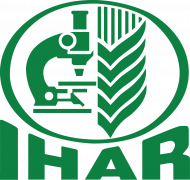Stomata, as the channels for CO2 uptake and water loss, play a crucial role in plant production and water utilization. The responses of plant leaf stomatal conductance to water deficit have been extensively studied; however, little is known about stomatal size and aperture across varying soil water contents, especially at night. This study investigated stomatal density, aperture, diurnal (Td) and nocturnal (Tn) transpiration, as well as their respective rates (Ed and En) in potato plants under eight different soil moisture levels (40%, 45%, 50%, 60%, 70%, 80%, 100%, and 120% field water capacity (FWC)). Both Td and Tn increased with increasing soil water content and were linearly correlated with total plant biomass. In contrast, Ed and En exhibited a saturating response to soil water content. Compared to lower soil water content (< 80% FWC), higher soil water content (≥ 80% FWC) led to a reduction in stomatal density on both the adaxial and abaxial surfaces. Stomatal size on the adaxial surface was larger at 40–60% FWC than at 70–120% FWC, whereas the opposite was observed for the abaxial stomata. Abaxial stomatal aperture was consistently larger than adaxial aperture across all soil moisture levels, particularly at higher soil water content (≥ 70% FWC). On the adaxial surface, stomatal aperture decreased at night under all soil moisture conditions, with a more pronounced reduction observed at higher soil water content. This study demonstrates that sufficient water supply does not lead to excessive water consumption in potato plants, which is also influenced by nocturnal aperture regulation.
Full publication URL















